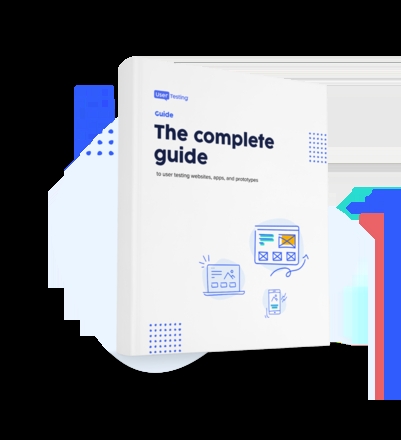
How to deal with limited budgets for user research recruitment and tools

Although we strive to work in an environment where user research is a part of every stage of the product development lifecycle, and your executives have completely bought into everything you do… we have to be realistic. Not everyone has the luxury of generous budgets, resources and sign-off.
In this year’s State of UX in the Enterprise report, securing resources and budget was the top three challenge for UX teams in some of the biggest organizations across the globe. So if budgets are tight and resources are limited for the majority of us, how can we ensure that products are still being built with the user in mind?
To answer this question, we asked a variety of senior research leaders for their recommendations on getting research done with the tightest of demands.
You’ll find the most common theme is incapsulated in the following headline…
Get creative
“When working with limited resources, it’s important to get creative. While I believe in talking to real users as much as possible, there are times when you need to find other sources of user information due to budget, timeline or simply a lack of access to users. One very under-utilized ‘tool’ is doing research with – and developing relationships with – customer service. I often work with them as a first step in understanding the users and their pain points, especially when I have limited time and budget. This often helps the employee experience too, so it’s a win-win. White paper-style research and expert evaluations can also be done quickly and cheaply. Just be sure to provide actionable, prioritized recommendations whenever possible.”
Trista Rowan
Sr. UX Researcher / Designer
Takeaways:
- Team-up with your customer service – they’re at the frontline of customer interaction
- White paper research and expert evaluations can be done quickly and economically
Free trials are your friend
“Find tools with trial offerings or cheap monthly subscriptions. Zoom, DeDoose (for qualitative data analysis), SurveyMonkey and Otter (for recording and transcription) are some of my favorites. You can find tools that are inexpensive ($10-15 a month) that will help you immensely with your work. Get creative with recruitment – find target-users through in-person events, online forums, meetups, cold calling, Craigslist, referrals, etc. Don’t be afraid to ask those who have already participated to refer someone to your research, especially if you offer a referral incentive. Do whatever it takes to find people to talk to, and make sure they understand you are building tools to help them. If your goals and intentions are clear, this will build trust.”
Paige Nuzzolillo, Delta Dental of Washington
Takeaways:
- Use tools with free trials or monthly subscriptions
- Recruit participants through in-person events, online forums or meetups
- Incentivize previous participants to refer their friends
Streamline your process
“Streamlining the process by having good templates, a recruiting database and being creative are super helpful. Sometimes that means going out of your way: once I needed cardiologists, who do not have time and don‘t need money. So I attended an open house day at a heart clinic and spoke to doctors and patients on campus – this won them over to participate in my study.”
Nicole Armbruster, UsercentriX
Founder and senior UX & Usability researcher
Takeaways:
- Build templates to make your research process more efficient
- Have a ready-to-go recruitment database
- Be bold in where you go to recruit hard-to-reach participants
Get hacky
“You work with what you got. Free trials, free tools, Craigslist, manual recruiting, intercepts… I have done some hacky things to get research done with limited tools/budget. There are a lot of free or low cost tools that can get the job done if you look hard enough.”
Samantha Alaimo, Grubhub
Sr. UX Researcher
Takeaways:
- Take advantage of what you have already
- Free tools are available – you just have to put in the effort to find them and make sure they’re suitable
Take advantage of your own customers
“When money is missing, imagination takes over. There are many options for getting research done without having the funds to recruit participants or pay for expensive tools. It’s going to depend a lot on the type of product or service you’re working for, but there’s always an option to turn to. Regarding participants, if you are lucky enough to have your own database of registered users, the best option is to use it. You will be surprised how likely people will participate. If they use your product or service, it’s because it gives them something they need, therefore they tend to be predisposed to help you continue to give them the same but improved service. If you don’t have your own database you have to explore other options such as guerrilla testing or ask for volunteers to participate in a testers’ program. As for the use of tools, fortunately the variety of the market is very wide and it is possible to find good free tools (yes, usually with limitations) and tools that allow you to hire them temporarily. It is a question of spending a little more time than usual to plan your research to get the most out of the tools available.”
Almudena Caballero Díaz, Infojobs (ePreselec)
Service and UX Designer
Takeaways:
- If you have a database of registered customers – use it!
- Try guerrilla testing
- Prepare to spend a lot more time planning your research
In summary
Although we’re usually not ones to deploy such platitudes, there is some truth to ‘necessity being the mother of invention’… If you’re in a tight spot, you can come up with some incredibly creative solutions that you may otherwise never attempt. And surface insights that you wouldn’t normally uncover.
Try working with what you’ve got first – can your existing tools be hacked or combined to provide new solutions? Are there teams in your organization who have direct contact with customers who you can leverage?
Prepare to put in some extra preliminary research – many of our experts above have achieved success through free trials or low-cost tools; they just had to look hard enough to find them.
Literally, put yourself out there – either by guerrilla testing in a place your users are likely to frequent or going to meetups that are outside of your normal purview.
If time and people power is the issue—use templates in your research process as much as possible to streamline the workload.
If you’re concerned about any of these issues, keep this quote from Almudena Caballero Díaz in mind: “When money is missing, imagination takes over.”

Get started with experience research
Everything you need to know to effectively plan, conduct, and analyze remote experience research.





